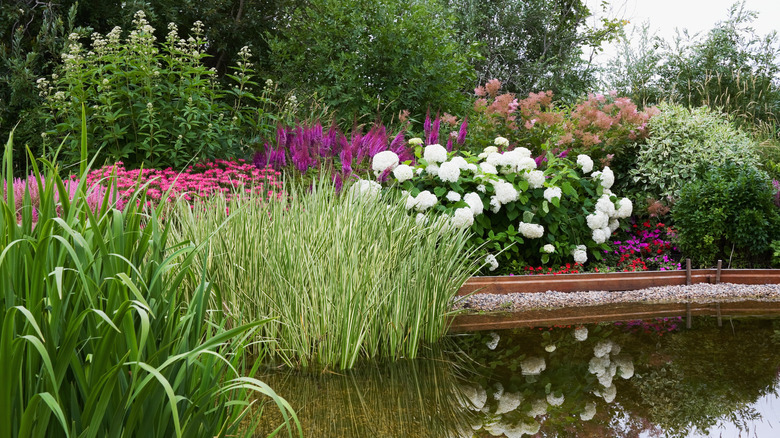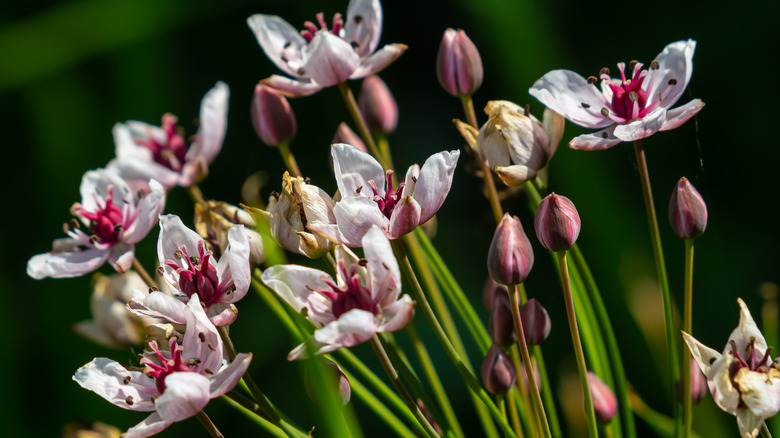The Pink Flowering Weed That Will Wreak Havoc On Your Water Garden
A water garden is the best of both worlds. It combines the eye-catching variety of plants in a garden with the peaceful ambience and benefits of a water feature, like a fountain or pond. Designing one brings endless enjoyment to an outdoor space. While you may initially be selective about the type of plants you place in and around the water, total control of your garden isn't always possible. There's a chance other species might appear, brought along through the wind, introduced by aquatic life, or arrived by way of a bird or wildlife passing through.
Some are a pleasant surprise like the formation of water lilies and their blooming flowers. Other plants look lovely, but this is nothing more than a convincing disguise. Such is the case with flowering rush (Butomus umbellatus). While this plant might be a gorgeous albeit unexpected addition for unsuspecting gardeners and plant enthusiasts, folks with knowledge of just what they are will know they're worth eradicating. The flowering plant is actually an invasive species and causes havoc for other plants and wildlife. They're even prohibited in a handful of states, like Minnesota and Wisconsin. Here's what to know about flowering rush and how to get rid of it if it appears in your water garden.
Why flowering rush should be removed from water gardens
Most gardeners know you should never grow invasive plants in any kind of garden. Doing so can threaten the other plants existing in your outdoor space and the local ecosystem. If you notice a grassy plant with whitish-pink blooms in an umbrella shape, this is likely flowering rush. It might look unassuming until June, when the flowers typically start blooming. Sure, it could look nice around the perimeter of a waterscape, but these are not plants worth keeping in your pond.
Flowering rush's invasive nature leads to several problems. The first issue is that it spreads quickly and distributes easily — branches and buds can fall off and get transported to other parts of your garden or to locations outside of your property. Once it's established, it has no problem growing thick enough to stamp out native plants and ruin habitats for animals. This completely messes with the ecological balance and diversity of an area. If these plants end up in or around your water garden, there are ways to extract them. The first is through physically pulling up the plant, removing roots, rhizomes and all. Try to keep the plant together to avoid pieces scattering. The second option is to use herbicides like glyphosate and penoxsulam. When using this method, read instruction labels and water usage warnings to ensure your herbicide of choice will be effective and not harm other plants, wildlife, and your water garden in the process.

